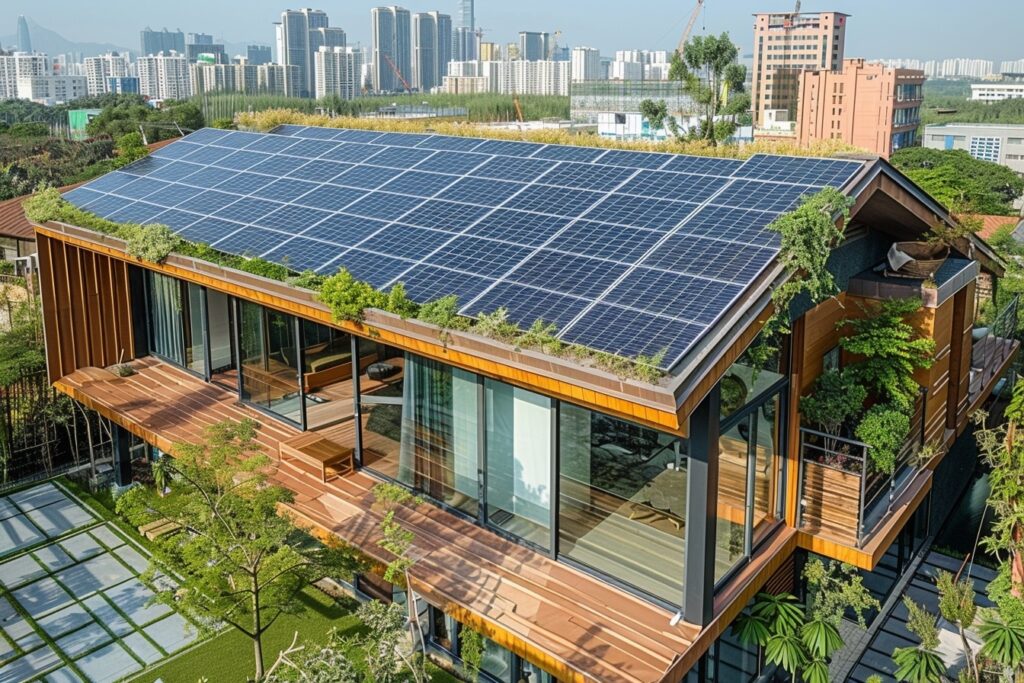
Natural Ventilation Climate Strategies for Eco-Friendly Living
In today’s rapidly changing climate, adopting natural ventilation climate strategies is crucial for creating eco-friendly living spaces. These strategies not only reduce energy consumption but also contribute to a healthier indoor environment. By integrating natural ventilation into building designs, we can minimize our reliance on artificial cooling systems and promote sustainability. This article explores various techniques and benefits of natural ventilation, offering valuable insights for homeowners and builders alike.
Understanding and implementing natural ventilation strategies can significantly impact the sustainability of a building. Natural ventilation leverages the natural forces of wind and buoyancy to circulate air, providing fresh air indoors while reducing the need for mechanical systems. This approach aligns with the growing emphasis on sustainable practices in construction and urban planning.

The Importance of Natural Ventilation
Natural ventilation plays a vital role in enhancing indoor air quality. By allowing fresh air to flow through a building, it dilutes indoor pollutants and improves the overall comfort of occupants. Moreover, it reduces the risk of respiratory problems and other health issues associated with poor air quality.
Incorporating natural ventilation strategies also contributes to energy efficiency. By reducing the need for air conditioning and mechanical ventilation systems, buildings can significantly lower their energy consumption and carbon footprint. This is particularly important in the context of sustainable cities, where energy efficiency is a key goal.
Key Elements of Natural Ventilation
There are several key elements to consider when implementing natural ventilation strategies in a building:
- Building Orientation: The orientation of a building can significantly impact its ventilation potential. Positioning the building to take advantage of prevailing winds can enhance airflow and cooling.
- Window Placement: Strategically placing windows and openings can facilitate cross-ventilation, allowing air to flow naturally through the space.
- Ventilation Stacks: Incorporating ventilation stacks or chimneys can help draw warm air out of the building, promoting air movement and cooling.
Designing for Natural Ventilation
When designing a building with natural ventilation in mind, several factors should be considered:
Architectural Considerations
Architectural design plays a crucial role in optimizing natural ventilation. Features such as atriums, courtyards, and open floor plans can enhance airflow and improve ventilation efficiency. For more insights on how architectural design impacts ventilation, check out our article on ventilation design.
Material Selection
Choosing the right materials can also influence a building’s ventilation capabilities. Materials that promote thermal mass, such as concrete and brick, can help regulate indoor temperatures and enhance the effectiveness of natural ventilation. Explore more about sustainable materials in our guide to recycled materials.
Benefits of Natural Ventilation
Implementing natural ventilation strategies offers numerous benefits:
Energy Savings
By reducing reliance on mechanical systems, buildings can achieve significant energy savings. This not only lowers utility bills but also reduces the environmental impact of the building.
Improved Comfort
Natural ventilation enhances indoor comfort by providing a steady supply of fresh air and maintaining optimal temperature levels. This contributes to a healthier and more pleasant living environment.
Environmental Impact
By minimizing energy consumption and lowering carbon emissions, natural ventilation helps mitigate environmental impact. This aligns with global sustainability goals and supports the development of sustainable communities.
Challenges and Solutions
While natural ventilation offers numerous benefits, it also presents certain challenges:
Climate Variability
In regions with extreme climates, relying solely on natural ventilation can be challenging. In such cases, hybrid ventilation systems that combine natural and mechanical methods can provide a balanced solution.
Building Regulations
Compliance with building codes and regulations can sometimes limit the implementation of natural ventilation strategies. However, innovative design approaches and advocacy for policy changes can help overcome these barriers. Learn more about innovative designs in our article on innovative designs.
Case Studies
Several successful projects have demonstrated the effectiveness of natural ventilation strategies. For instance, a recent study highlighted a building that achieved a 30% reduction in energy consumption by optimizing its natural ventilation design. Explore more case studies in our article on success stories.
Conclusion
Incorporating natural ventilation climate strategies into building designs is a crucial step towards achieving sustainability and enhancing indoor comfort. By understanding the principles and benefits of natural ventilation, homeowners and builders can create spaces that are both environmentally friendly and conducive to well-being. Embracing these strategies is not only an investment in the future but also a commitment to a healthier and more sustainable world.

FAQs
- What are natural ventilation climate strategies?
Natural ventilation climate strategies involve using natural forces like wind and temperature differences to circulate air in buildings, reducing the need for mechanical systems. - How does natural ventilation benefit indoor air quality?
Natural ventilation improves indoor air quality by allowing fresh air to enter and circulate, diluting pollutants and reducing health risks. - Can natural ventilation be used in extreme climates?
In extreme climates, natural ventilation can be supplemented with hybrid systems that combine natural and mechanical ventilation to maintain comfort.
This article contains affiliate links. We may earn a commission at no extra cost to you.